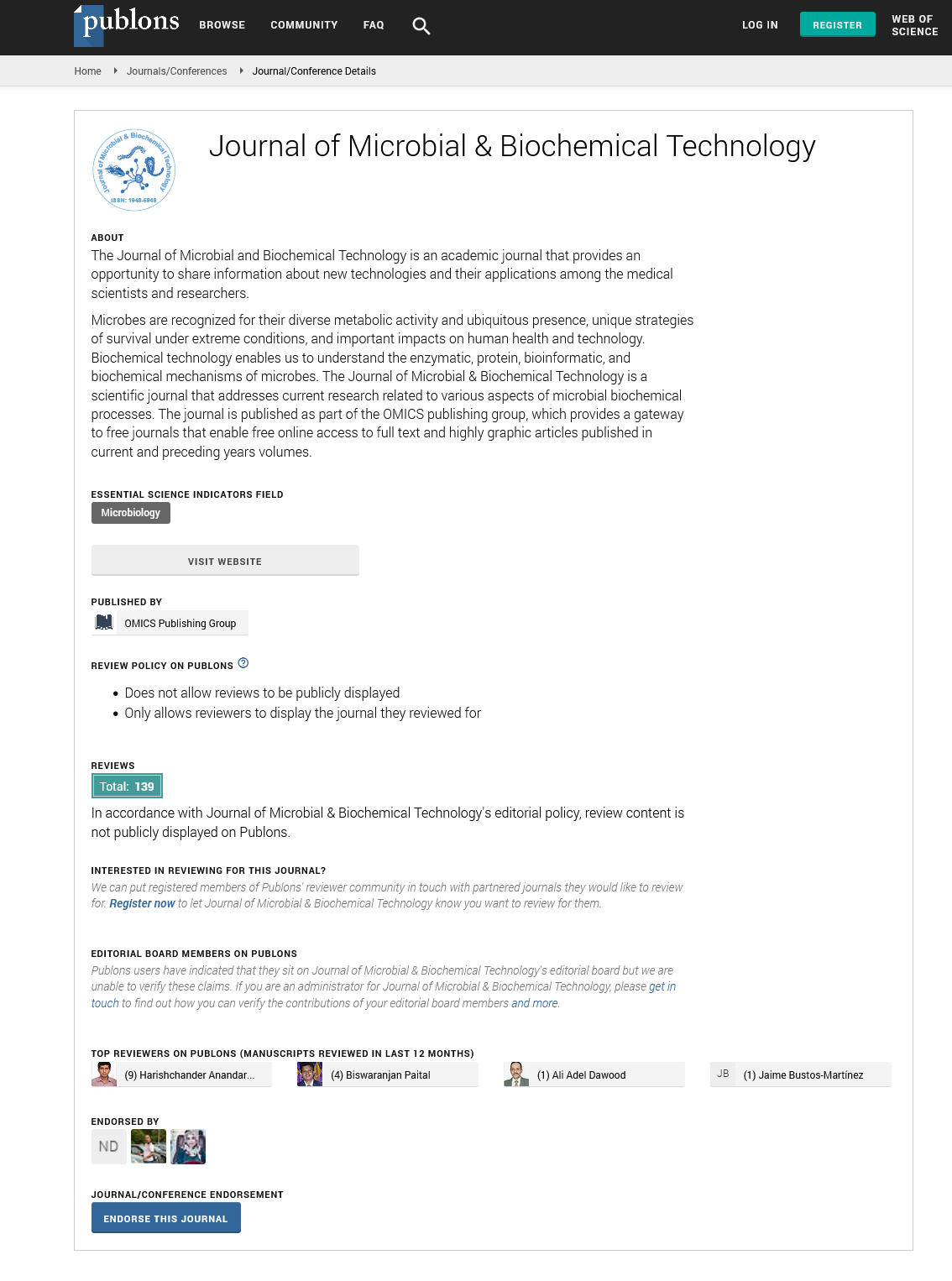Indexed In
- Academic Journals Database
- Genamics JournalSeek
- Academic Keys
- JournalTOCs
- China National Knowledge Infrastructure (CNKI)
- Scimago
- Access to Global Online Research in Agriculture (AGORA)
- Electronic Journals Library
- RefSeek
- Directory of Research Journal Indexing (DRJI)
- Hamdard University
- EBSCO A-Z
- OCLC- WorldCat
- SWB online catalog
- Virtual Library of Biology (vifabio)
- Publons
- MIAR
- University Grants Commission
- Geneva Foundation for Medical Education and Research
- Euro Pub
- Google Scholar
Useful Links
Share This Page
Journal Flyer

Open Access Journals
- Agri and Aquaculture
- Biochemistry
- Bioinformatics & Systems Biology
- Business & Management
- Chemistry
- Clinical Sciences
- Engineering
- Food & Nutrition
- General Science
- Genetics & Molecular Biology
- Immunology & Microbiology
- Medical Sciences
- Neuroscience & Psychology
- Nursing & Health Care
- Pharmaceutical Sciences
Perspective - (2022) Volume 14, Issue 3
Advancements in Identification of Proteins
Maria Joseph*Received: 01-Mar-2022, Manuscript No. JMBT-22-16176; Editor assigned: 03-Mar-2022, Pre QC No. JMBT-22-16176 (PQ); Reviewed: 21-Mar-2022, QC No. JMBT-22-16176; Revised: 28-Mar-2022, Manuscript No. JMBT-22-16176 (R); Published: 04-Apr-2022, DOI: 10.35248/1948-5948.22.14.492
Description
Recent advances in protein methods have led to the application of mass spectrometry to the identification of proteins by Peptide Mass Fingerprinting (PMF). In this process, target proteins are segregated by SDS gel electrophoresis and are digested directly in the gel slice with trypsin, other proteases or cleaving chemicals. The resulting peptides are extracted and the unfractionated mixture is analyzed by MALDI-TOF mass spectrometry. The millions of the resulting peptides are used to query a database of protein and DNA sequences for likely candidate proteins. This is fulfilled by matching the measured masses with masses prognosticated from the databases after ‘virtual’ digestion with the proteinase or chemical fractionalization agent. The further peptide masses that match the predicted masses, the more certain one are of the liability that the protein is identified. Easily, high- mass accuracy is needed for this method to be of use. Occasionally no matches are found or the position of certainty is too low. Working with species whose genome is complete is a benefit in experiments of this nature.
Amounts of material required for the mass fingerprinting approach are dependent upon the sample and its preparation. In our laboratory, with our validated procedures, we’re able to perform mass mapping/ protein identification experiments with as little as 2 pmol (loaded on the gel) of sample. Still, more sample increases the chances of a successful outcome. The success of any experiment will depend upon reasonable sample estimates and veritably careful sample handling. We recommend that you contact us before planning any mass mapping trials to help you estimate the amount of protein and describe favored handling techniques.
Several disadvantages to PMF need to be remembered when planning your trial. One is the incapability to specifically isolate the amino terminus of the protein. Thus, amino acid sequence information about this region of the molecule is frequently tough to acquire using mass spectrometry. Second, due to mass commonalities of amino acids it’s frequently difficult to correctly identify amino acids (especially during MS/ MS or de novo experiments. For illustration, leucine and isoleucine have isobaric masses and cannot be discerned by PMF or MS/MS. Other amino acids (for illustration, Glutamine and Lysine) have relatively small mass differences and can be mis- identified by these methods.
Correct identification of a recombinant protein (and sequence) can frequently be fulfilled using mass spec and PMF alone, but occasionally direct sequencing by Edman ways is needed. Thus, it’s our favored approach to combine the reciprocal ways of mass spectrometric mapping and chemical protein sequencing (Edman declination) to identify proteins. This is especially true when you’re working in ‘non-genome’ species.
Conclusion
UV absorption method for protein estimation estimates the amount of protein by measuring the characteristic absorption of tyrosine and tryptophan at 280 nm, which is simple, sensitive, fast, and still can be recycled after identification. In the protein molecule, the benzene ring of the tyrosine, phenylalanine and tryptophan residues contains conjugated double bonds, so that the protein has the property of absorbing UV. The absorbance will be proportional to the protein content while absorption peak is at 280 nm. In addition, the protein solution at 238 nm light absorption value and peptide bond content is proportional. The protein content can be measured by comparing the light absorption value of the protein solution with the protein concentration at a certain wavelength.
Besides these methods, there are other methods for the identification of proteins including Haze-active Protein Determination Method, Kjeldahl determination, Enzyme Linked Immunosorbent Assay etc. These methods can be used to promote the accurate and improve effectiveness for protein identification, being applied in various fields.
Citation: Maria J (2022) Advancements in Identification of Proteins. J Microb Biochem Technol. 14: 492.
Copyright: © 2022 Maria J. This is an open-access article distributed under the terms of the Creative Commons Attribution License, which permits unrestricted use, distribution, and reproduction in any medium, provided the original author and source are credited.

